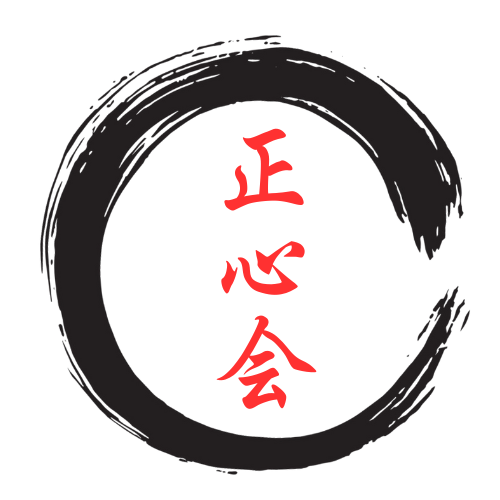As the vocabulary used in Japanese martial arts is complex, you will find here a recap of the main Japanese words in use. It is definitely a lot to remember, but with time, most of them will just become usual.
A
Age Uke (揚げ受け ) – Rising block
Ashi
Atama (頭 ) – Head
Atemi (当身 ) – Strike
Atemi
B
Bojutsu (棒術 ) – Staff-art. Sometimes taught in classical jujutsu schools, depending on the system
Budo (武道 ) – Martial ways (literally “way(s) of war)
Bugei (武芸 ) – Martial crafts (Another way of referring to Japanese martial arts)
Bujutsu (武術 ) – Martial arts (Yet another interchangeable term for Japanese martial art)
C
Chu (中 ) – Middle
Chudan (中段 ) – Mid level
D
Dan (段 ) – Level
De Ashi Barai (出足払い ) – Advancing Foot Sweep
Deshi (弟子 ) – Student of a system
Do/Michi (道 ) – (the) Way
Dojo (道場 ) – Place of practice
Dori (Toru) (取り・捕り ) – To grab or capture.
E
Empi Uchi (エンピ・燕飛打ち ) – Elbow strike
G
Gedan (下段 ) - Low level (below belt)
Gi – Training Uniform (abbreviated from “dogi” of “keikogi”)
Gyaku (逆 )- Reverse (Can also refer to some Kansetsu
Gyaku Tsuki (逆突き ) – Reverse punch
H
Hadaka Jime (裸締め ) – Naked strangle
Harai (払い ) – Sweeping
Hidari (左 ) – Left
Hiza (膝 ) – Knee
Hiza
I
Ichi (一 ) – One
Ippon Seoi Nage (一本背負い投げ ) – One arm shoulder throw
Irimi (入り身 ) – Entering
J
Jiyu Kumite (自由組み手 ) – Free sparring
Jodan (上段 ) – High/Upper level
Jodan Uke (上段受け ) – High block
Juji (十字 ) – Cross (Literal translation: Figure ten. In Japanese, ten is 十 )
Juji Gatame (十字固め ) – Cross lock/armbar
Juji Jime (十字締め ) – Cross
Juji Uke (十字受け)- Cross block
Jujutsu (柔術 ) – The gentle art
Jutsu (術 ) – Art or technique
K
Kaiten (回転 ) – Rotation
Kakato (踵 ) – Heel
Kake – The point at which a throw will take
Kamae (構え ) – Posture (or stance)
Kani
Kansetsu (関節 ) – Joint Locking
Kansetsu
Kata (形・型 ) –
Kata (肩 ) – Shoulder
Kata-
Kata-
Kata-ha-
Katame (固め ) – Lock/Hold
Katame Waza (固め技・業 ) – Joint locking/immobilizing techniques.
Kappo/Katsu (活法・活 ) –
Keri (蹴り ) – Kick
Keri
Kiai (気合 ) – Shout with vital energy
Kime (決め ) – Focus
Ko (小 ) – Minor/small
Kohai (後輩 ) – Beginner or junior student in the dojo
Ko-
Kote Gaeshi (小手返し ) – Wrist turnout lock/throw
Ko-
Koshi (腰 )- Hip (when used first in a throw name)
Koshi
Kubi (首 ) – Neck
Kubi Nage (首投げ ) – Neck throw
Kumite (組み手 ) – Sparring
Kuzushi (崩し ) – Unbalancing
Kyu (級 ) – Coloured belt
M
Mae (前 ) – Front
Mae
Makkikomi (巻き込み ) – Winding throw
Mate (待て ) – Wait
Mawashi-
Mikazuki (三日月 ) – Crescent
Mune (胸 ) – Chest
Mune-
Mokuso (目閉 ) – Meditation
N
Nage (投げ ) – Throw
Ni (二 ) – Two
O
O (大 ) – Major/Large
Ogoshi (大腰 ) – Major/Large hip throw
O-
Omote (表 ) – Front or surface (Can also refer to basic skill sets of techniques in classical jujutsu schools)
O-
O-
Otagai-ni-rei (お互いに礼 ) – Mutual bow to all assembled
R
Randori (乱捕り ) – Sparring
Rei (礼 ) – To bow
Reiho (礼法 ) – Etiquette methods. (From dojo to dojo the
Roku (六 ) – Six
Ryu (流 ) – School/system of Martial Art. (e.g. Kito-
S
San (三 ) – Three
Seiza (正座 ) – Formal kneeling position
Sensei (先生 ) – Teacher
Sensei-ni-rei (先生に礼 ) – Bow to
Seiken (正拳 ) – Horizontal fist
Sempai (先輩 ) – Senior student(s) in the dojo
Seoi-
Shi (四 ) – Four (note: yon is usually four,
Shichi (七 ) – Seven (note: similar to “shi”, “
Shihan (師範 ) – Master
Shime (締め ) – Choke/strangle
Shime-waza (締め技・業 ) – Strangulation techniques
Shomen (正面 ) – Front (Also used to refer to the front of the dojo)
Shomen-Ni-Rei (正面に礼 ) – Bowing to the front of the dojo
Soto (外 ) – Outer/outside
Sutemi (捨て身 ) – Sacrifice
Sutemi-Waza (捨て身技・業 ) – Sacrifice techniques
T
Tai (体 ) – The Chinese reading for body
Tai-
Tai-
Tanren (鍛錬) – training. The characters imply the ideo of forging the body and removing its impurities through practice
Tanto (短刀 ) – Dagger (one of the weapons jujutsu was originally designed to defend against)
Tatami (畳 ) – Mat
Tate (立て ) – Vertical (Can also mean to stand)
Te (手 ) – hand
Tori (捕り・取り ) – Defender in a demonstration.
Tsuki (突き ) – Punch or thrust with a weapon.
U
Uchi (打ち ) – Strike
Uchi (内 ) – Inside/inner
Ude (腕 ) – Arm
Ude-kansetsu-waza (腕関節技・業 ) – Arm locking techniques
Uke (受け・請け ) – Recieve/reciever (ie, opponent to tori in a demonstration)
Ukemi (受身 ) – Breakfalling (literally uke = “to recieve”)
Uki-goshi (浮き腰 ) – Floating hip throw
Ura (裏 ) – Reverse or underside
Ura-ken (裏拳 ) – Backfist strike
Ushiro (後ろ ) – Rear
Ushiro-dori (後ろ取り・捕り ) – Attack from behind
W
Waki (脇 ) – Side (Can also refer to the armpit)
Wakibara (脇腹 ) – Flank/floating ribs (Literally: Side stomach)
Waki-Gatame (脇固め ) – Side armlock using the armpit for leverage
Waza (技・業 ) – Technique
Y
Yame! (止め! ) – Stop!
Yoko (横 ) – Side
Yoko Geri (横蹴り ) –
Yon (四 ) – Four
